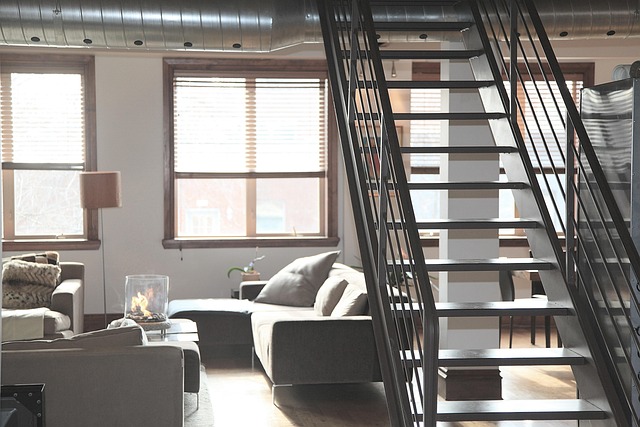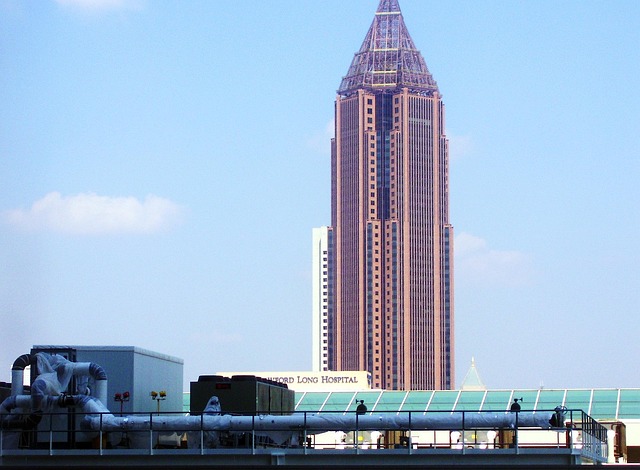Discovering Affordable Family-Friendly Albany Neighborhoods

Albany, NY, offers diverse neighborhoods with affordable housing options for families, including pet-friendly apartments under $1000. The city has on-…….
Welcome to an in-depth exploration of apartment pricing dynamics in Albany, New York. This article aims to dissect the factors influencing one of the most crucial aspects of urban living—residential property costs—specifically focusing on Albany’s unique market. As a city with a rich history and a vibrant cultural scene, Albany’s apartment prices reflect a complex interplay of economic, social, and technological forces. By delving into this topic, we hope to provide valuable insights for residents, investors, and policymakers alike, helping them navigate the ever-evolving landscape of urban housing.
What are Apartment Prices in Albany, NY?
In essence, apartment prices refer to the cost of renting or purchasing residential units within the city limits of Albany, NY. This includes a wide range of dwellings, from studio apartments in historic downtown buildings to spacious multi-bedroom condos with river views. The market encompasses both private rentals and sales, catering to diverse consumer needs and preferences.
Key Components:
Historical Context:
Albany’s housing market has evolved significantly over the past few decades. The city experienced a boom in high-rise apartment construction during the mid-20th century, followed by a period of decline and urban renewal. In recent years, Albany has witnessed a revival with increased investment in downtown areas, leading to higher apartment prices. This resurgence is attributed to factors like economic diversification, improving infrastructure, and the city’s cultural attractions.
The dynamics of apartment pricing in any location are not isolated events but part of a global phenomenon. Albany’s market is influenced by international trends, particularly in the following ways:
Global Investment Flows: Foreign investors often seek opportunities in stable, growing markets like Albany. This influx can drive up property prices, especially in premium locations. For instance, Asian and European investors have shown interest in US real estate, including cities like Albany, due to favorable regulations and economic prospects.
International Migration Patterns: As global mobility increases, migration trends impact housing demand. Students, expatriates, and remote workers often seek affordable yet desirable places to live. Albany’s relatively low cost of living compared to other major cities attracts these individuals, putting upward pressure on apartment prices.
Global Economic Shifts: Global economic downturns or booms can reverberate through local markets. For instance, the 2008 financial crisis impacted property values worldwide, while post-pandemic recovery has led to rising rents and sales in many urban centers, including Albany.
The apartment price market in Albany is a dynamic economic system with various interconnected factors:
| Market Dynamics | Impact on Prices |
|---|---|
| Supply and Demand: The fundamental law of supply and demand plays a pivotal role. High demand for apartments, especially in desirable neighborhoods, leads to higher prices. Limited supply, often due to strict zoning regulations, exacerbates this effect. | Rental Market: In areas with high demand, landlords may charge premium rents, driving up overall rental rates. This can incentivize developers to target these locations, further affecting pricing. |
Technology is revolutionizing various sectors, and the apartment price market is no exception. Here are some significant technological advancements:
Online Listing Platforms: Websites like Zillow, Trulia, and Apartments.com have transformed how people search for apartments. These platforms provide digital access to property listings, allowing users to compare prices, amenities, and locations easily. This transparency empowers tenants and buyers, often leading to more competitive pricing.
Smart Homes and IoT (Internet of Things): The integration of smart technology in apartments offers convenience and energy efficiency. Smart locks, thermostats, and security systems can enhance tenant experiences and potentially increase property values. As these technologies become standard, developers may incorporate them into new constructions, influencing design and pricing strategies.
Property Management Software: Landlords and property managers use software to streamline operations, from rent collection to maintenance requests. Efficient management practices can improve tenant satisfaction and reduce turnover rates, which is a significant cost savings. This efficiency might indirectly impact apartment prices by influencing rental rates.
Virtual Tours and 3D Modeling: The COVID-19 pandemic accelerated the adoption of virtual tours and 3D property modeling. These tools allow potential buyers and renters to view apartments remotely, expanding the market reach for landlords. While it may reduce the need for in-person visits, it could also increase competition and pricing pressure.
Government policies and regulations significantly shape Albany’s apartment price landscape:
Zoning Laws: Zoning ordinances dictate land use and development within specific areas. In Albany, these laws can restrict the construction of high-density housing in certain neighborhoods, limiting supply and potentially driving up prices. Relaxing or updating zoning regulations could stimulate new developments, increasing competition and easing pricing pressures.
Affordable Housing Initiatives: Albany has implemented policies to promote affordable housing, such as incentives for developers who include a percentage of units as affordable housing. These initiatives aim to provide low- and moderate-income residents with accessible housing options, preventing rent or purchase price spikes.
Landlord-Tenant Laws: State and local laws protect tenants’ rights and regulate landlord practices. These regulations ensure fair rental terms and control the extent to which landlords can increase rents annually. Balancing tenant protection with market forces is crucial for maintaining a healthy apartment market.
Property Tax Policies: Property taxes are a significant cost for landlords, influencing their pricing strategies. Albany’s property tax policies can either support or hinder affordable housing development, depending on the tax rates and exemptions offered.
The apartment price market in Albany faces several challenges that require careful consideration and strategic solutions:
Affordability Crisis: One of the most pressing issues is the growing affordability gap. Rapidly rising rents and property prices outpace income growth for many residents, leading to homelessness and housing insecurity. Implementing policies to control rent increases and promote affordable housing development is essential.
Lack of Supply: Limited apartment supply, especially in popular neighborhoods, contributes to higher prices. Zoning restrictions and the time-consuming approval process for new constructions are often culprits. Streamlining permitting processes and encouraging mixed-use developments could increase housing stock.
Speculative Investing: Unregulated investment practices can lead to price bubbles and market instability. Speculators may drive up prices by purchasing properties with the sole intention of quick flipping or rent-seeking. Implementing measures to track and tax speculative investments can help stabilize the market.
Gentrification Concerns: Gentrification, a process where neighborhoods undergo a transformation, often leading to increased property values and rising rents, has social and economic implications. Policies should aim to balance community benefits with affordable housing preservation.
Proposed Solutions:
The renovation of the Empire State Plaza in downtown Albany is a notable success story. The project involved transforming an outdated government office complex into mixed-use apartments, retail, and office spaces. By offering a diverse range of housing options, the development attracted young professionals and families, stimulating local economic activity. The case demonstrates the potential for urban renewal to create vibrant neighborhoods and drive apartment prices upwards.
Lessons Learned:
This initiative aimed to address the lack of affordable housing near Albany’s main thoroughfare, State Street. The project involved building a mix of rental apartments and condominium units targeted at low- to moderate-income families. By providing quality housing options within walking distance of downtown amenities, it successfully attracted residents and contributed to the neighborhood’s revival.
Key Takeaways:
The future of apartment prices in Albany, NY, presents both opportunities and challenges:
Emerging Growth Areas: Neighborhoods like South End and the Waterfront are experiencing renaissance, with new developments attracting young professionals. These areas have the potential to become premium housing markets, similar to downtown Albany.
Technological Innovations: Smart homes, automation, and IoT will continue shaping housing preferences. Developers integrating these technologies early on may gain a competitive edge, influencing future apartment prices.
Sustainability Focus: With growing environmental consciousness, sustainable building practices will become mandatory. Eco-friendly apartments could command premium rents or sales prices, especially as Albany focuses on becoming a more eco-conscious city.
Remote Work Impact: The rise of remote work may alter housing patterns, with some residents opting for suburban areas or smaller cities. This shift could influence urban apartment prices and lead to new trends in suburban real estate.
Apartment prices in Albany, NY, are a dynamic interplay of economic forces, technological advancements, policy decisions, and social trends. Understanding these intricate factors is essential for residents, investors, and policymakers alike. As Albany continues to evolve, a delicate balance must be struck between fostering economic growth, attracting diverse populations, and ensuring affordable housing for all. By learning from successful initiatives and addressing challenges head-on, the city can navigate the future with confidence, creating a thriving and inclusive urban environment.
Q: Are apartment prices in Albany currently overvalued?
A: It’s subjective to declare whether prices are overvalued. Market values fluctuate based on supply and demand. However, historical trends show that Albany has experienced consistent growth, making it a desirable location. Affordability concerns prompt us to encourage balanced development to ensure prices remain accessible.
Q: How does the cost of living in Albany compare to other US cities?
A: Albany’s cost of living is generally lower than many major US cities, especially in terms of housing. According to recent studies, it ranks among the most affordable metropolitan areas for renters and homeowners. However, local factors like property taxes and utility costs can vary.
Q: What role do online listing platforms play in apartment pricing?
A: Online listings provide transparency, empowering tenants and buyers with information. They contribute to a more competitive market, often leading to balanced pricing. Landlords must remain adept at using these platforms to attract tenants or buyers effectively.
Q: How might remote work affect apartment prices in Albany?
A: Remote work has the potential to drive demand for housing in suburban areas, as some professionals seek more affordable and spacious options outside city centers. This shift could impact urban apartment prices, with downtown areas possibly experiencing reduced rents while suburbs may see increased property values.
Q: What incentives do landlords have to offer affordable units?
A: Landlords can benefit from tax incentives, grants, and subsidies for developing affordable housing. These incentives help offset the costs of providing lower-priced units, encouraging more developers to participate in creating inclusive housing options.

Albany, NY, offers diverse neighborhoods with affordable housing options for families, including pet-friendly apartments under $1000. The city has on-…….

Albany, NY's housing market offers a mix of affordable and luxurious options for all lifestyles. While apartment prices rise, discounts and pet-f…….

Albany, New York, offers a mix of modern lofts and affordable apartments catering to diverse budgets. With varying apartment prices, these properties…….

Albany's apartment market offers diverse options for various preferences and budgets, featuring modern high-rises, charming low-rise complexes, a…….

Albany apartments offer a mix of urban living and culinary delights, with gourmet kitchens as a growing trend. Apartment prices vary greatly in Albany…….

Albany, NY, witnesses a surge in demand for eco-friendly housing, driven by affordable micro-apartments near RPI and a growing preference for sustaina…….

Albany, NY offers diverse apartment options with affordable prices, especially in neighborhoods like South End and Upstate Heights. On-site management…….

Albany, NY's real estate market offers affordable, eco-friendly apartments due to its commitment to sustainability. With various green building i…….

Apartment prices in Albany, NY vary by location, size, age and management type. Downtown areas near attractions have higher costs for modern lofts wit…….

Exploring apartment prices in Albany, NY, where recent trends indicate a vibrant real estate market with varying rates based on location and amenities…….